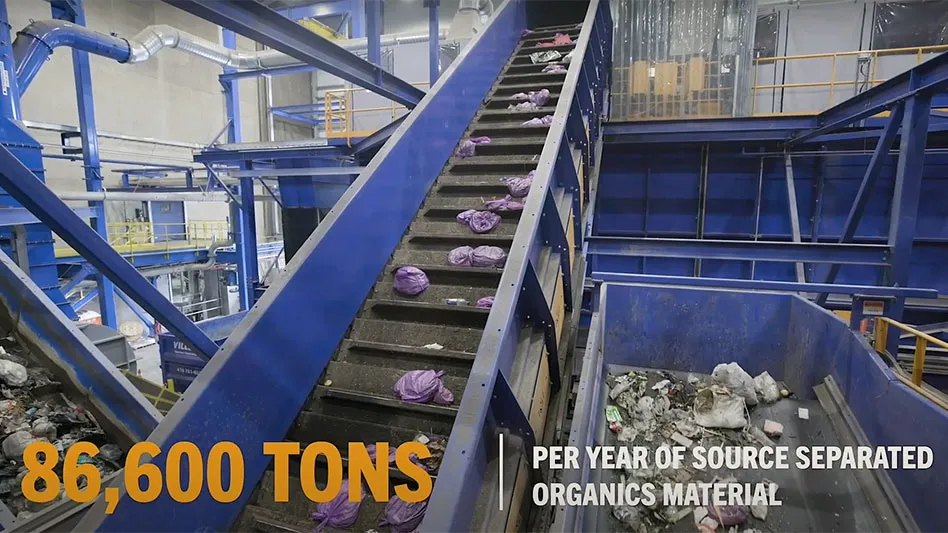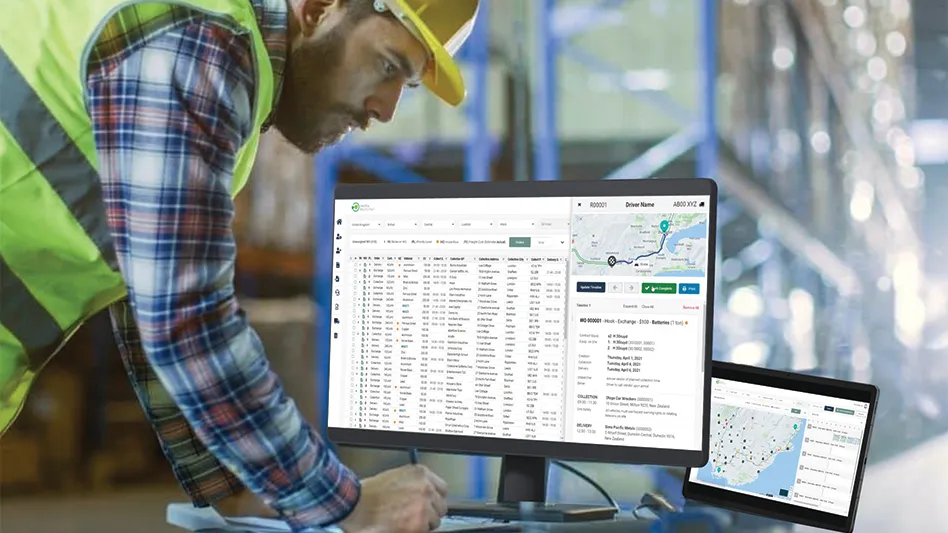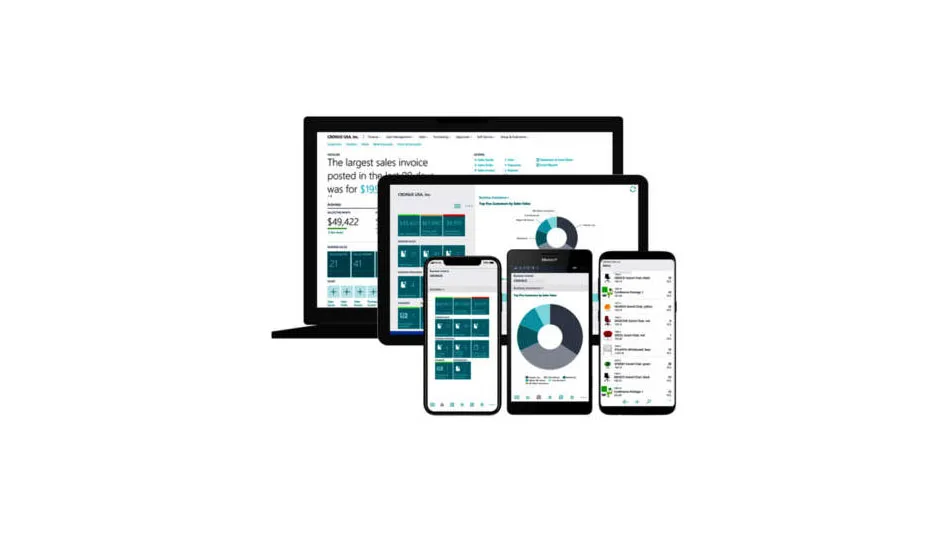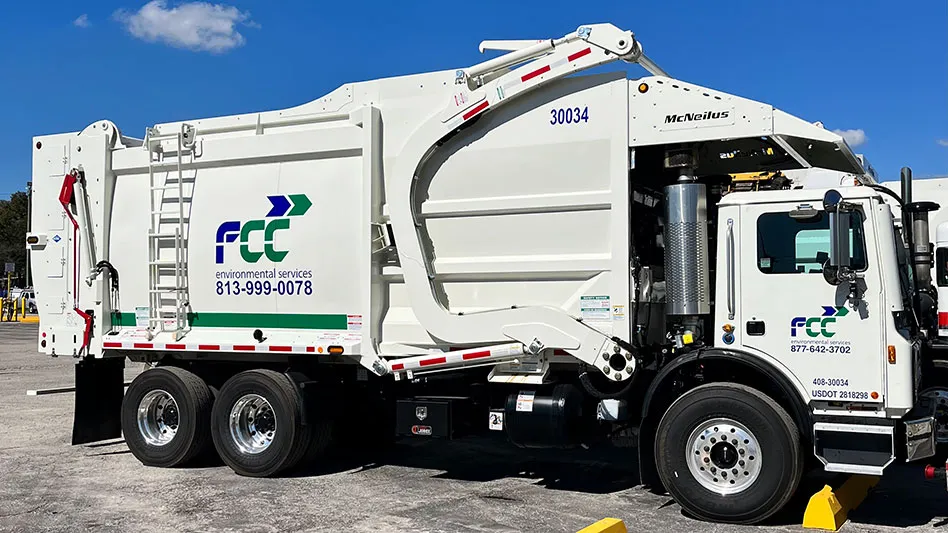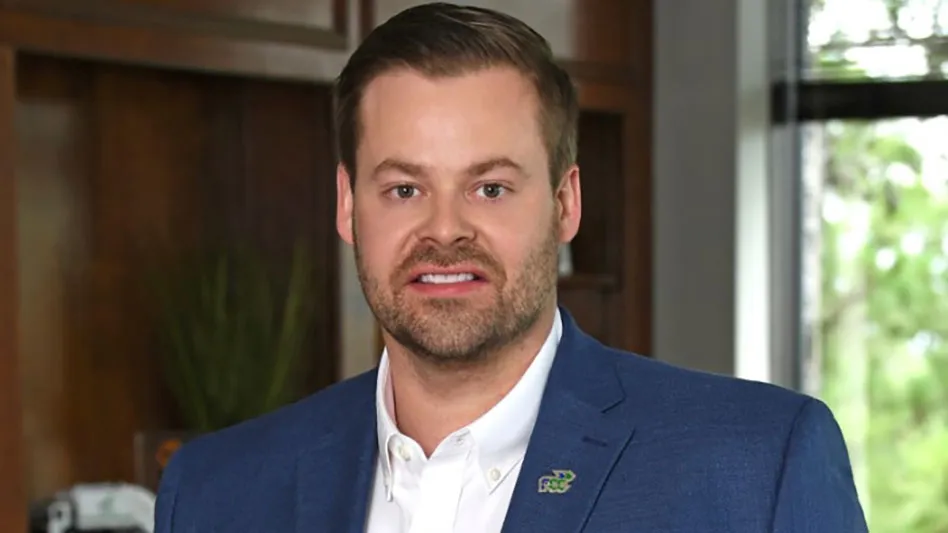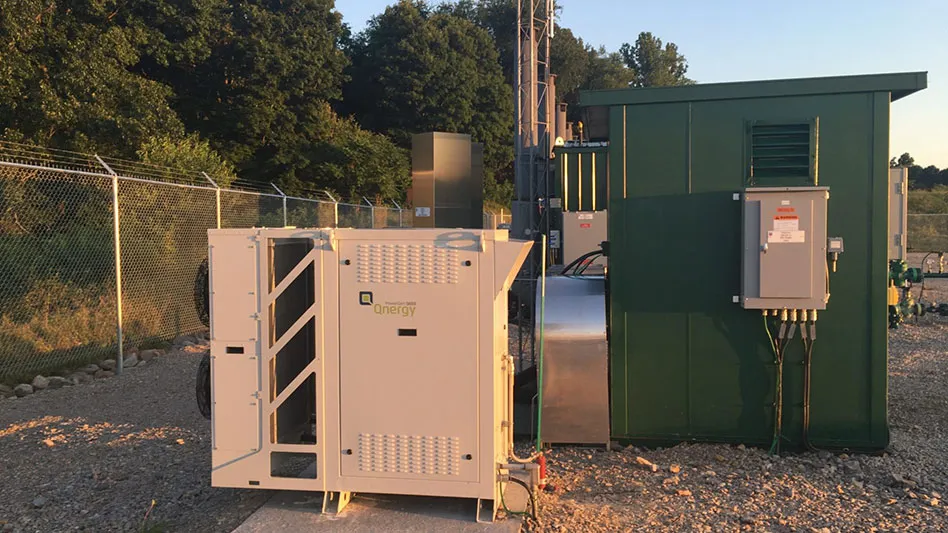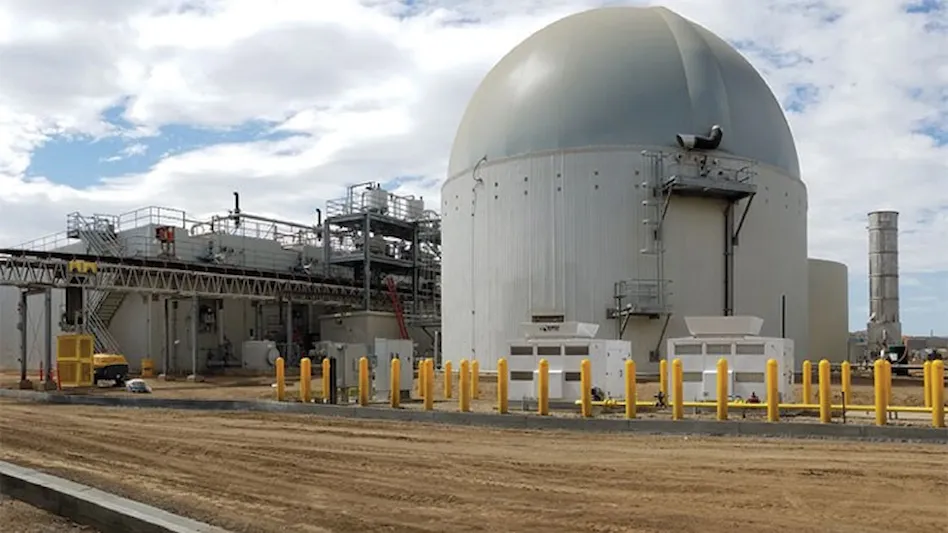
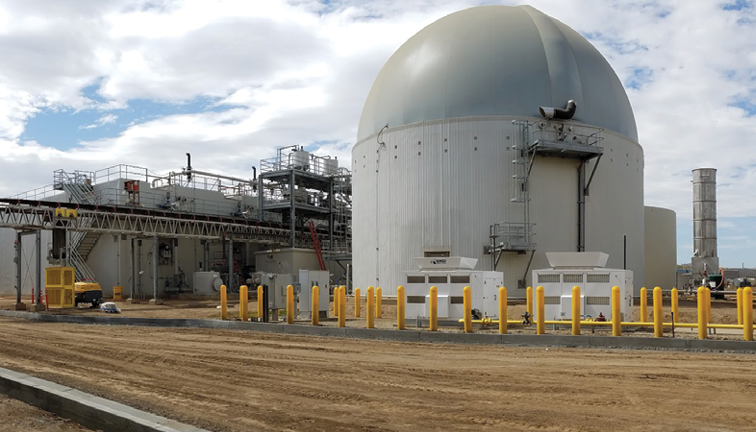
After several years of planning and construction, phase one of CR&R Environmental’s much anticipated anaerobic digestion (AD) project in Perris, California, is officially operating. The massive project was permitted in late 2013, and now the first trucks are fueling up with renewable natural gas produced from municipal solid waste (MSW). The project is considered one of the largest—if not the largest—AD project in the world of its kind, converting curbside MSW organics and green waste into fuel-grade biomethane.
The AD system currently accepts separated residential green waste from curbside collection carts, including grass and leaves, and residential food waste, including nondairy and meat products. “We will broaden the food waste option as time goes on,” says Paul Relis, CR&R senior vice president.
Relis says, as of mid-March, “At this point, we have phase one complete of the four phases. This phase has been operating in startup mode for three to four months now. We are producing digestate and are producing biomethane, using our truck fleet, and we have a pipeline interconnect under construction that is expected to be ready for pipeline injection of gas by June of this year.”
Phase two of the project “is quite far along,” Relis adds.
Each of the four project phases will add another digester able to process 83,000 tons of organics per year. When completed, the project will produce some 4 million gallons of diesel-equivalent per year. It’s a project of gigantic proportions, but it is one that Relis says he knew surrounding communities would support.
SUPPORT NETWORK
“The project was commenced more than five years ago in anticipation of eliminating the recycling credit for green waste going to landfills in California, higher recycling mandates and clean, renewable fuel initiatives by the state of California,” Relis says. “CR&R has been a technological leader in the solid waste/recycling industry, and we believed that many of the cities that we serve would welcome such technology.”
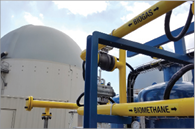
Indeed, they have. CR&R is under contract with 11 municipalities in Southern California, which Relis says have agreed to pay a few extra dollars per month, per household, to have organic waste processed to produce biomethane. “Part of the arrangement is that they get a renewable gas fleet,” he says.
The company will soon roll out a fleet of trucks using the Cummins ISX engine designed for near-zero emissions and to accept heavy-duty natural gas.
“Biomethane production has only just begun,” says Relis. “We expect to be fueling some 80 vehicles by June and at full four-phase build out in 2019 some 320 vehicles.”
The project cost $50 million. Around $10 million of the funding came in the form of grants from multiple agencies, including the California Energy Commission, the South Coast Air Quality Management District and CalRecycle. According to Relis, the balance is privately financed.
PROJECT SCOPE
The core of the technology for the AD facility comes from Eisenmann, a Germany-based company that has installed more than 90 biogas plants worldwide and has a U.S.-based office in Crystal Lake, Illinois. The company’s high-solids AD system employs a continuously fed, horizontal plug flow design, which it says allows maximum biogas production, consistency and full automation.
The gas cleanup system is supplied by Greenlane Biogas, Burnaby, British Columbia. This system will use water scrubbing and other technologies to clean raw biogas to required specifications for vehicle fuel or pipeline injection.
Other key construction team members include J.R. Miller & Associates, Brea, California, for architecture and engineering services, and W.M. Lyles, Fresno, California, for construction management services.
Relis says the process is almost completely automated. “We use the Eisenmann digester from Germany, and we are extremely pleased with the company and its performance.”
He adds, “We just started producing fuel-grade biomethane and that is using the Greenlane system.”
The soil product, called digestate, which remains after the digester process, is being used by the dairy industry on a project about 20 miles away. “We are developing our own composting facility where we will be able to further refine and blend that material for access to other and larger markets,” Relis says.
“The project was commenced more than five years ago in anticipation of eliminating the recycling credit for green waste going to landfills in California, higher recycling mandates and clean, renewable fuel initiatives by the state of California.” – Paul Relis, CR&R
CR&R and Southern California Gas Co. (SoCalGas), Los Angeles, broke ground in February to construct an 8-inch pipeline that will bring RNG into the SoCalGas distribution system for the first time.
The connecting pipeline will reach approximately 1.4 miles from an existing SoCalGas pipeline to the AD facility. Pipeline injection should occur by June.
“Once we have the gas in the pipeline, we can distribute it to our other natural gas fleets operating in Southern California and, eventually at full-scale, we will be able to sell gas on the market.”
Lisa Alexander, SoCalGas’ vice president, customer solutions and communications, says, “Bringing renewable gas into our pipeline system is a big step forward for SoCalGas and for California. Using our pipeline infrastructure to distribute this carbon-neutral fuel will help to slow climate change and meet state goals for increasing use of renewable fuels.”
She adds, “We see this decarbonization of our pipeline system as the way of the future.”

Explore the March 2017 Issue
Check out more from this issue and find you next story to read.
Latest from Waste Today
- AMCS showcasing Performance Sustainability Suite at WasteExpo
- New Way and Hyzon unveil first hydrogen fuel cell refuse truck
- NWRA honors award recipients during annual breakfast at WasteExpo
- Rubicon selling fleet technology business, issuing preferred equity to Rodina Capital
- Machinex to feature virtual tour of Rumpke MRF at WasteExpo
- Reworld releases 2024 sustainability report
- Novolex invests in Ozzi
- Routeware to unveil product updates at Waste Expo
